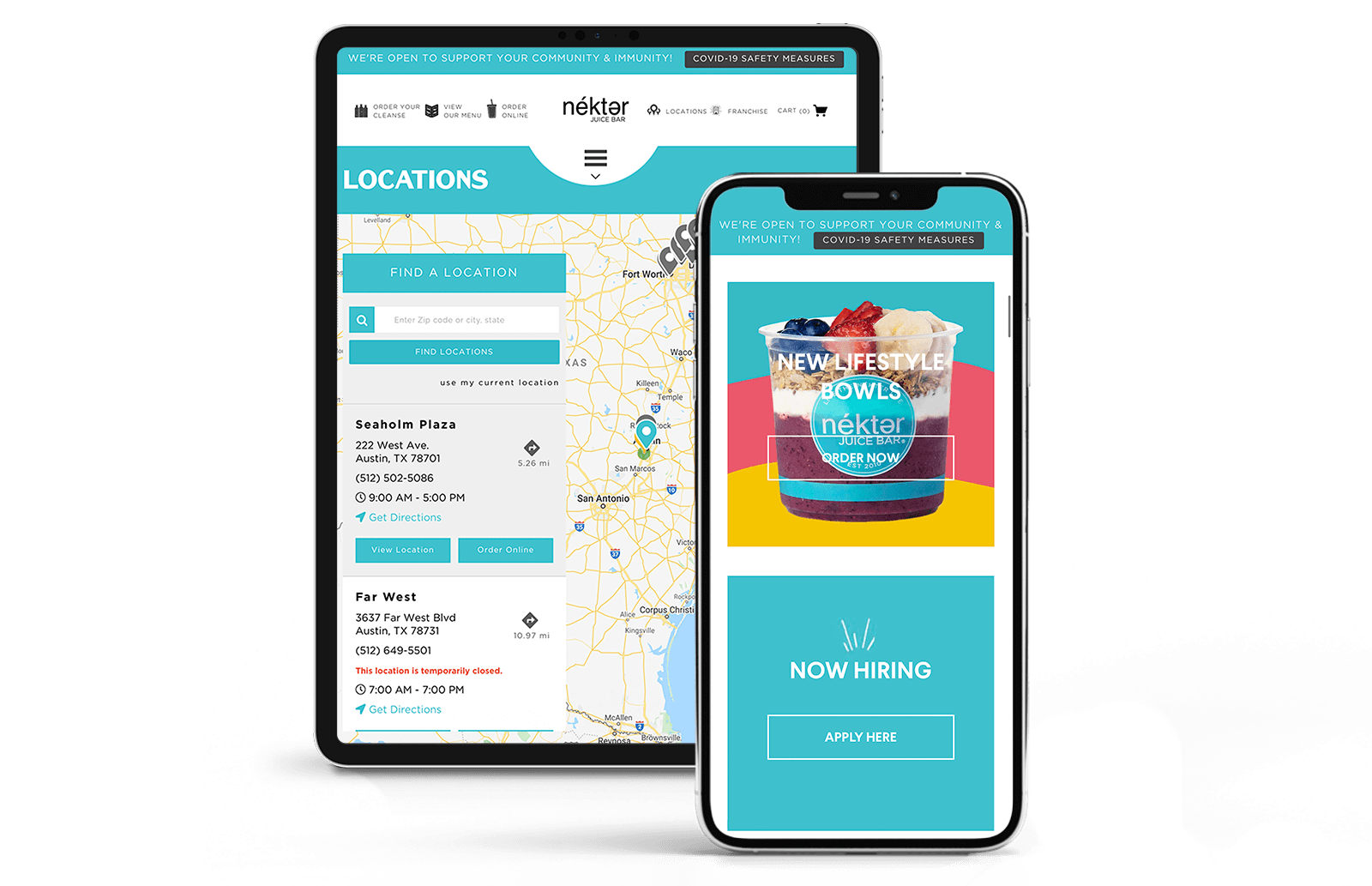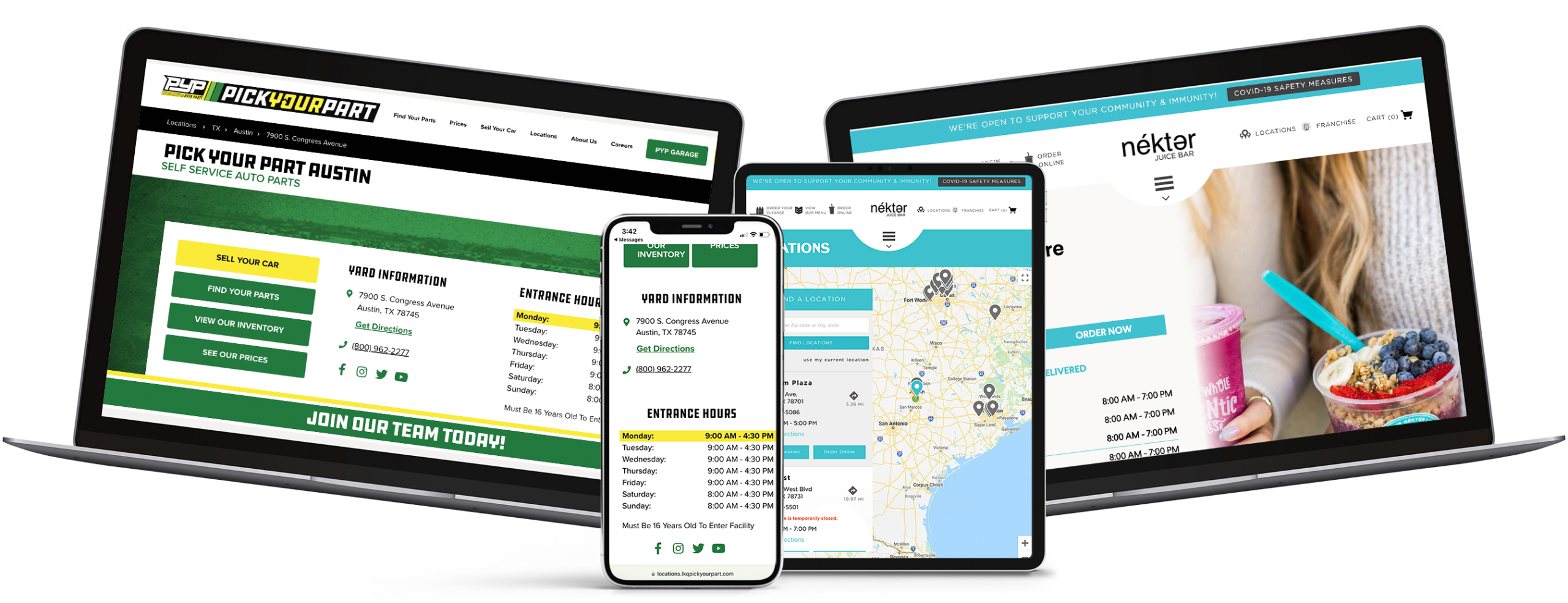Local Memo: TikTok Eyes Local Search with Google Maps-Style Reviews in Comments
What the Restaurant Industry Must Do To Optimize Local Pages
What the Restaurant Industry Must Do To Optimize Local Pages
The best way to bring more customers into your doors is to have them find you online. Ninety percent of guests research a restaurant online before dining—more than any other business type, and 57 percent of those guests viewed restaurant websites or local pages before selecting where to dine.
The facts say it all – consumers are researching where to eat online, and if your restaurant does not appear within those search results, you will be forgotten. Optimizing your local pages to help ensure customers discover you is key. Local pages are search-optimized brand pages at the local level that deliver a consistent presence across your restaurant locations and improve your local search visibility. In the restaurant industry, local pages are a must.

Within this blog, we’ll look at why local pages are crucial to the restaurant industry, tactics to optimize your local pages, and how local pages can help your restaurant deliver a localized experience to every potential diner.
Local Pages and the Restaurant Industry: The Basics
Have you ever gone to a restaurant’s corporate website and had trouble finding the menu for the location you were looking at? Similarly, have you tried to go to a restaurant’s website from their local listings to place an online order only to find that you’re back on the restaurant’s main home page? Consumers like convenience and local pages provide that.
While local pages are an added value to consumers, they will also help improve your restaurant’s online presence. Ninety-one percent of consumers start a local search first when looking for a business. If your restaurants have local pages that appear in localized search results, you’re increasing your chances of customers finding your restaurant instead of the competition. An increase in consumer discovery will ultimately lead to increased sales, which is what every marketer strives for. Now that you understand the importance of local pages, we’ll look at how you can implement and optimize them.
Tactics to Optimize Your Local Pages
When creating local pages, there are certain factors your restaurant must keep in mind. For instance, a strong keyword strategy is critical and will help your restaurant’s local pages rank higher on Google. While a keyword strategy is necessary, content and design are essential to keep in mind as well.
First, we’ll dive into what it takes to plan your keyword strategy. Get started by thinking about relevant keywords in your industry and what differentiates your restaurant from the competition. Do you own a fast-casual restaurant chain that is known for its cleanliness and fast service? Are you an Italian restaurant that has the best Detroit-style pizza? These are questions to ask yourself when planning a keyword strategy. Include keywords in your local pages’ content that are specific to your business to help you rank for popular terms, which helps you stand out from competitors. Similarly, it’s essential to include location-specific keywords on your local pages. Adjusting keywords based on location will allow the correct local page to show up in relevant search results.
Once you have established your restaurant’s keyword strategy for local pages, it’s time to move onto the design and content strategy – it’s vital to keep consistency in mind. While some of the language on your pages may vary, your restaurant’s brand identity should remain the same on every local page. Whether it’s Los Angeles or Charleston, your customers should recognize every location page is for the same restaurant chain.
When creating local pages, consider including the following:
- Interior and exterior photos
- This includes your restaurant’s logo, storefront images, parking, and interior images of the business.
- Updated name, address, and phone number (NAP)
- Like Google My Business listings, your restaurants must have an updated NAP on local pages.
- Direct calls-to-action
- What are you asking your consumers to do on this page? Do you want them to download a menu, place an order, make a reservation, or all of the above?
- A detailed description of the restaurant
- For your restaurant to rank better in SEO, a detailed description of your business is vital. Let them know the type of food you serve, the atmosphere of the restaurant, and any other essential information.
- An embedded map
- Consumers can click on the map and get immediate directions to your local restaurant.
- Customer testimonials or reviews
- Location-specific customer testimonials and reviews will help showcase how consumers feel about your local restaurant and build credibility.
With a strong keyword strategy and all of the content and design elements listed above, your restaurant’s local pages are ready to be published.
Deliver a Search Optimized and Localized Experience
After creating the perfect local pages for your restaurant, it’s time to start seeing the results. Over time, your restaurant should notice an increase in traffic to your local pages and improved visibility on Google. While creating local pages for 100s or 1,000s of restaurant locations can seem daunting, it doesn’t have to be!
SOCi’s Local Pages Solution can help. This exciting tool allows your restaurant to take complete control of 100s or 1000s of customized, responsive local pages or sites that deliver a consistent brand presence and improve local search visibility. SOCi’s Local Pages Solution also enables your local restaurants to easily make real-time updates to local pages and website data, including custom titles, meta descriptions, keywords, categories, and contact info for every location.

Need to be convinced further? Nekter Juice Bar’s Co-Founder and CEO explains, “SOCi’s franchise-friendly, easy-to-use platform is exactly what we need to support unified marketing campaigns across all of our markets.” Learn more about why SOCi was selected as the platform of record from one of the most successful concepts in the franchise world, Nekter Juice Bar.
Big names in restaurants – Nekter Juice Bar, Bar Louie, Cinnaholic – have all found great success leveraging SOCi’s Central CommandTM, and your multi-location restaurant can too! For more insight into how SOCi can help your restaurant optimize its local pages and crush its other localized marketing efforts, request a demo today!







